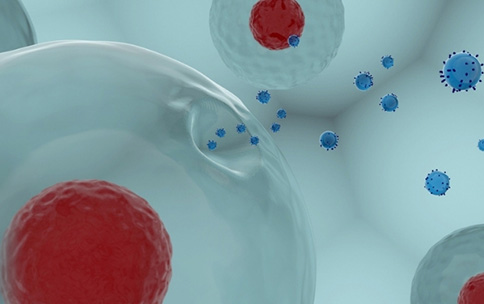
The biological molecule RNA, sometimes in the form of extracellular RNA or “exRNA,” can be released by cells and transported through the body, with the potential to influence a recipient cell. The NIH Common Fund Extracellular RNA Communication (ERC) addressing major barriers to our understanding of exRNA biology and harnessing its therapeutic potential. In its second stage, the program is focusing on developing tools and technologies to provide greater understanding of large complexes, like Extracellular Vesicles (EVs), that carry exRNA through the human body. Currently, much of what is known about EVs and a subset of EVs called exosomes comes from research that only provides “snapshot” images or measurements. However, understanding how EVs move through the body or transmit signals from cells to cells is a dynamic process that needs to be understood in real time rather than as snapshots. Now researchers have developed a system of visualizing exosomes more dynamically and provide insight into their pathfinding and migration.
The exRNA researchers Dr. Alissa Weaver and colleagues designed a system built on their previous technologies that uses a stable and bright pH-sensitive reporter molecule that gives off light observable under a microscope. This provides live imaging of exosomes fusing together or with cells and cellular interactions with extracellular exosomes. Using this improved system, they visualize exosomes generated from lab-grown cells in 3D culture and in living organisms. They observed that exosomes are secreted towards the front of migrating cells and left behind in exosome trails. They described this as exosomes promoting “leader–follower” behavior in 2D and 3D migration. Finally, they also modified the reporter system to allow observation of not only exosome secretion but also internal trafficking events from one cell to another. This live visualization system will be a useful tool for understanding and visualizing exosomes in real time and gaining insight into their roles in both normal processes and the pathogenesis of diverse diseases.
A live cell reporter of exosome secretion and uptake reveals pathfinding behavior of migrating cells. Sung, B. H., von Lersner, A., Guerrero, J., Krystofiak, E. S., Inman, D., Pelletier, R., Zijlstra, A., Ponik, S. M., & Weaver, A. M. (2020). Nature communications, 11(1), 2092. https://doi.org/10.1038/s41467-020-15747-2.


